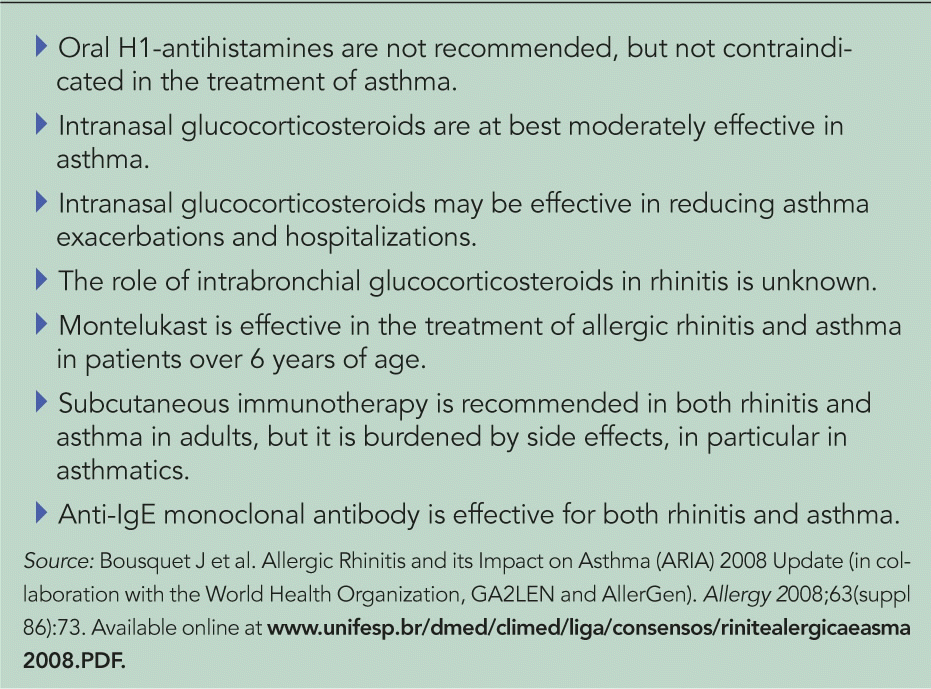Dr. Fornadley agreed that a pulmonary function testing is needed for the diagnosis of asthma, but he doesn’t think it necessarily falls to the otolaryngologist to do it. For the otolaryngologist, the key factor in making the diagnosis is to have a high index of suspicion, he said. If you don’t think about asthma, you may miss this diagnosis.
Explore This Issue
April 2009An additional use of these tests, according to Dr. Marple, is to ensure the safety of patients undergoing immunotherapy who may present with symptoms of asthma. If a patient comes in with a tight chest, new cough, or exacerbation of cough and there is concern about an underlying asthma flare, it is important to realize that giving an injection of immunotherapy may exacerbate the flare, put the patient at risk of going into a bronchospasm, or increase the chance of triggering anaphylaxis, he said, emphasizing the benefit of a pulmonary function test to identify these patients prior to delivering immunotherapy.
To Treat or Triage
Patients with allergies who are diagnosed with mild or moderate asthma can be treated by otolaryngologists who are trained and comfortable treating these patients, said Dr. Pillsbury, but he recommends referring patients with severe asthma to pulmonologists.
In addition to referring patients with difficult or severe asthma, Dr. Marple also suggests referring patients with asthma who do not have upper respiratory disease to a pulmonologist or allergist.
For otolaryngologists who choose to treat asthma along with allergic rhinitis, the updated ARIA guidelines offer a comprehensive description of management approaches, including a guide to a single approach to treating both conditions (Table 3).
In addition to the updated ARIA guidelines, detailed treatment approaches for long-term management of specific populations of people with asthma (ie, children, youth, adults) are available in the recently published updated Guidelines for the Diagnosis and Management of Asthma by the National Institutes of Health.3
Summary
As specialists with expertise in the region of the body that includes the upper and lower respiratory tract, otolaryngologists are in a good position to assist in diagnosing and treating allergy patients who also may have asthma. With improved efficacy seen in patients with allergies treated with new asthma medications, evidence is increasingly pointing to the need to treat both allergies and asthma for optimal patient outcomes. Critical to the ability of otolaryngologists to incorporate asthma into clinical practice is the use of pulmonary function tests that are now more accessible and can be done in the office setting. With training on how to conduct and interpret these tests, along with recognizing the symptoms of asthma to make a differential diagnosis with allergies, otolaryngologists can play an instrumental role in providing comprehensive care for their patients with these chronic conditions.

Leave a Reply